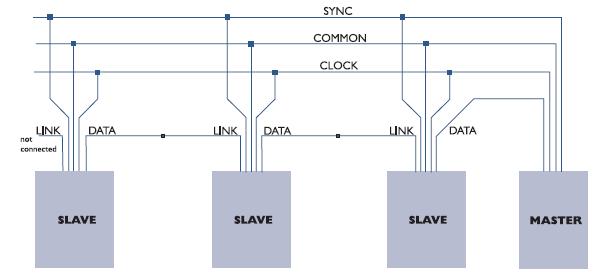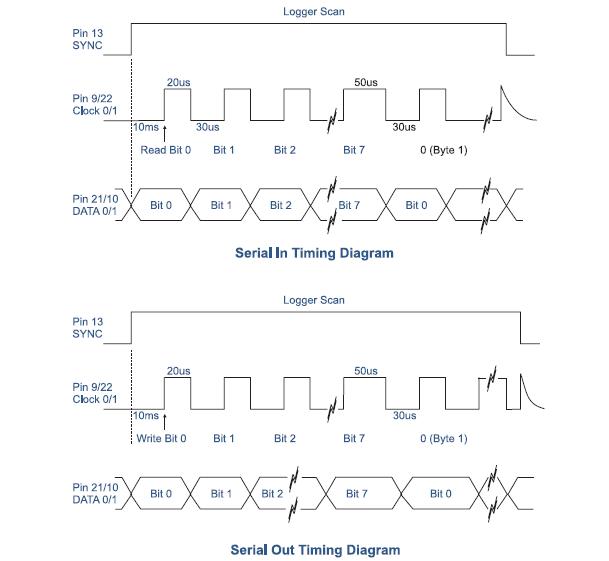Technical White Paper
Printer-Friendly Version
The Unidata HSIO interface is a Unidata standard for connecting sensors, relays and displays to Unidata Neon Remote Terminals and Neon Remote Loggers.
HSIO implementations allow up to sixteen compatible instruments to be connected to a single Unidata data logger.
Each instrument requires one 16 bit channel of bandwidth allocated to the HSIO implementation. Model 3016 and 3004M (Versions B and later) have a single bus with 8 x 16-bit channels.
The electrical interface consists of a five-wire bus system, allowing a master (datalogger) to interrogate up to 16 slaves (instruments). Signal levels are TTL compatible. They are:
Generated by the master. It is used to indicate to the slave that a bus read is about to begin (active high).
Signal ground.
Generated by the master. Clocks in data sent from the slave to the master. The number of clock pulses generated depends upon the number of slaves connected to each bus.
Generated by the slave. 16 bits of data per slave. A read starts with the least significant bit of the least significant byte and each clock pulse reads the next most significant bit.
Used to connect more than one slave instrument to a bus (“daisy-chaining”). The first slave’s data line is connected to the master. The second slave’s data line is connected to the link input of the first slave. A third slave’s data line would be connected to the link input of the second slave, and so on.
Two data types are supported, binary and ASCII.
Binary is used with the Model 6541C precision Water Level Instrument and ASCII is used with the 6526LCD.

